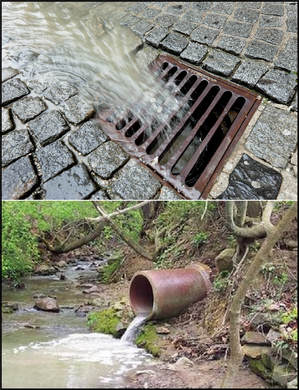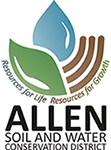Storm Drains
It’s Important To Protect Storm Drains
 We install storm drains in our streets, parking lots, and yards to move water away from these areas. However, many don’t realize that these storm drains are connected to our rivers and streams. After storm events, pollution enters the storm drain system right along with water. These pollutants include: trash and dirt that gather on our streets, chemicals and fertilizers used on our lawns, and oil and antifreeze leaking from our vehicles. Pet waste, falling leaves, and salt are other commonly overlooked pollution sources.
We install storm drains in our streets, parking lots, and yards to move water away from these areas. However, many don’t realize that these storm drains are connected to our rivers and streams. After storm events, pollution enters the storm drain system right along with water. These pollutants include: trash and dirt that gather on our streets, chemicals and fertilizers used on our lawns, and oil and antifreeze leaking from our vehicles. Pet waste, falling leaves, and salt are other commonly overlooked pollution sources.
Storm drains deliver these pollutants from the landscape of our entire community to our river, each and every time we get a significant rainfall. As these pollutants combine in our river system on a regular basis, it is quite easy to see why we have water quality problems in local streams.
 You Can Make a Difference
You Can Make a Difference
Care of storm drains not only prevents pollution from entering streams, it also helps to reduce flooding.
Here’s what you can do:
1. Sweep up and remove dirt, grass clippings, trash, and leaves that gather in your curb gutter and at the storm drain grate before it’s washed into the storm drain.
2. Wash hard surfaces onto your lawn instead of into the curb gutter or storm drain.
3. Wash your car on the lawn so that the grass can filter detergent and dirt.
4. Remove pet waste from curb lawns and other areas that drain into storm drains.
5. Follow label recommendations when applying fertilizer and chemicals to your yard and don’t apply before rain.
6. Never use storm drains to dispose of wastes of any kind, including used oil, paint, paint thinner, and cleaning products.


